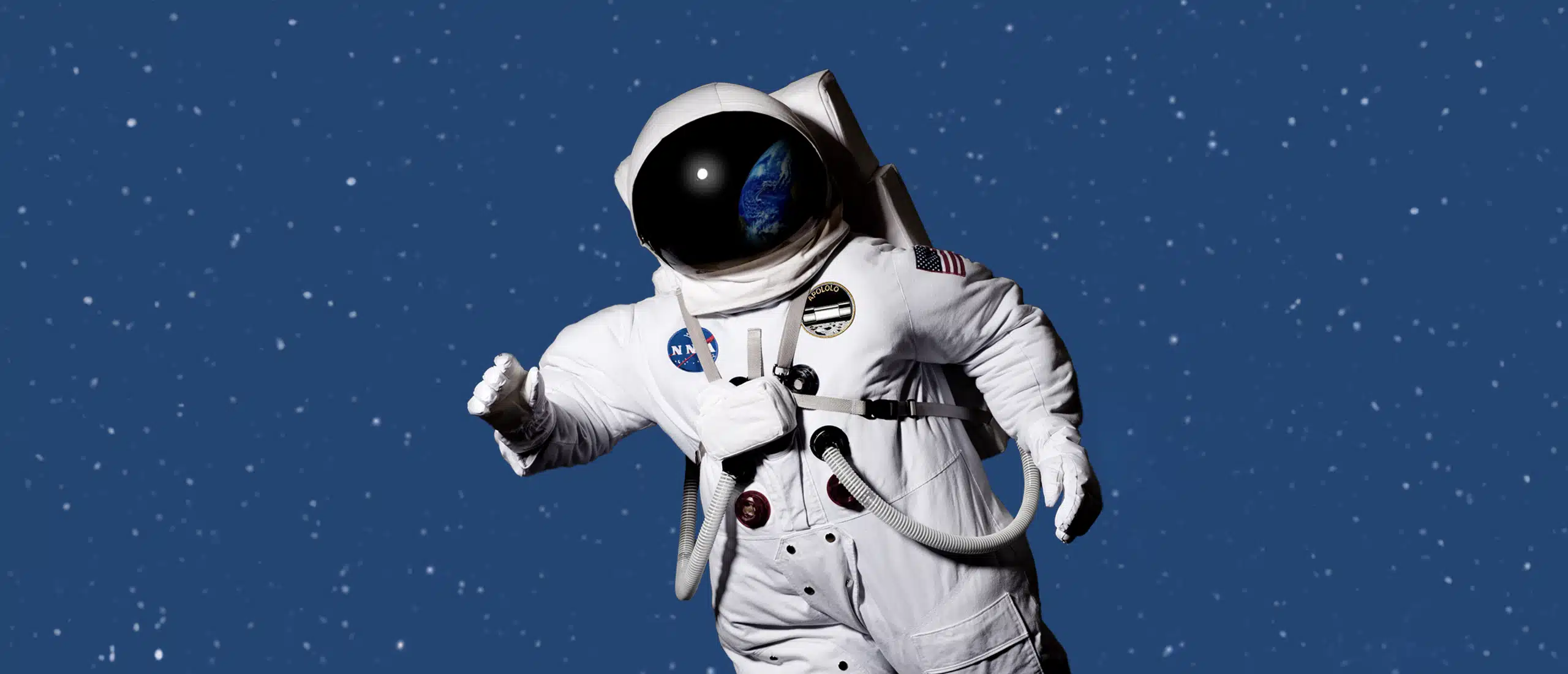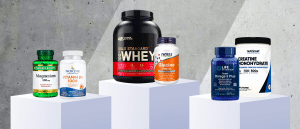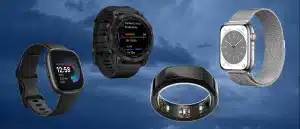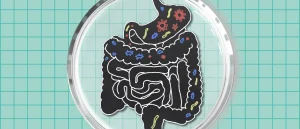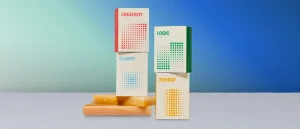Looking to Live a Longer, Healthier Life on Earth? NASA Can Help
Being in space changes you. And not just in the “seeing the earth as a little blue dot” kind of way.
No, simply living in the microgravity environment that exists outside of Earth’s atmosphere can cause physiological changes. This very atmosphere shows how things like radiation and environmental stressors can accelerate the aging process for everyone, including humans who will never leave this planet.
How do we know this? NASA’s been studying it for over 50 years via their Human Research Program, and more recently, in their “Clinical Nutrition Assessment of ISS Astronauts”—that is, a close study of astronauts before, during, and after their time aboard the International Space Station. Another study comparing twins Mark and Scott Kelly (after one, Scott, went to space while the other, Mark, stayed home) showed “at least 10 key physiological processes were influenced” during long-term space flight, including body mass and nutrition; telomeres length regulation; maintenance of genome stability; vascular health; ocular structural adaptations; transcriptional and metabolic changes; epigenetic shifts; lipid level alterations; microbiome responses; and cognitive functions. (“Non-terrestrial” sounds about right.)
As NASA has learned more about the ways space can affect our bodies negatively—sometimes in drastic ways—it’s changed its approach to diet and nutrition for its astronauts. Here’s everything you need to know about the diet and supplements provided to NASA astronauts in space, and how that might impact what you eat, well, not in space.
How Space Flight Affects Human Health, and Why That’s Relevant to Earthlings
We’ve known for some time that the rigors of space flight can be detrimental to the physiology of astronauts, and even downright deadly. Just look at one of the first animals sent to space, Laika the stray Moscovite dog, who was shot into orbit, and died, aboard the Sputnik 2 in 1957. During ascent, Laika’s respiration increased to three to four times the pre-launch rate, and her heart rate more than doubled; she died on the fourth day of the flight, after a malfunction caused temperatures inside the craft to reach 104 degrees Fahrenheit.
Heat, g-forces, zero gravity: these forces, and how to protect space travelers from them, are better understood today. But what’s happening inside astronauts’ bodies is a much tougher nut to crack. The Clinical Nutrition Assessment of ISS Astronauts has provided massive troves of data regarding the otherwise invisible effects on astronauts’ biological systems like bone metabolism, blood chemistry, and blood levels of important vitamins and minerals.
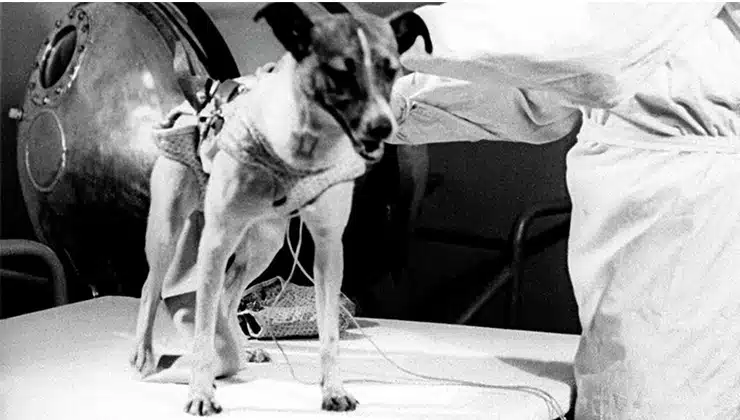
There have been many further studies of these systems. One from 2005 (1) proclaimed “The Nutritional Status of Astronauts Is Altered After Long-Term Space Flight Aboard the ISS,” then detailed how crew members struggled with their recommended dietary intake and lost weight while in space. “In several situations during missions, concerns were raised about inadequate intake of nutrients (most often energy),” the study reports—signaling that one of the biggest issues while surviving in space is just finding the time (and appetite) to eat enough.
The study also found that subjects consumed on average several (around 3.5, roughly) multivitamin supplements per week. In spite of this multivitamin regimen, astronauts returned to Earth with lower total bone mineral content and bone mineral density. Without Earth’s gravity affecting the human body, weight-bearing bones lose on average 1 percent to 1.5 percent (2) of mineral density per month during spaceflight. Earthbound humans typically don’t begin losing bone density until their 40s.
Without the proper diet and exercise routine, astronauts also lose muscle mass (3) in microgravity faster than they would on Earth.
There are other concerns, too. Studies show higher levels of oxidative stress—damage to cells and DNA on a molecular level, caused by free radicals and other elements, as well as the “wear and tear” of life—can affect astronauts in space, causing genetic and cellular-level damage. And galactic cosmic radiation, high-energy protons, and heavy ions from outside our solar system, constantly bombard astronauts at rates far higher than folks on Earth. The NASA Twins Study showed how Scott Kelly experienced changes to gene expression that his brother didn’t experience on Earth—some of which is thought to have been caused by radiation exposure.
How to Supplement Like an Astronaut
Vitamins, “essential nutrients,” and nutrition
Us regular, ground-bound folks are suffering what some researchers have termed “an ignored epidemic” (4) when it comes to Vitamin D deficiency, and it’s not much different for astronauts. Currently, NASA requires ISS crews to regularly take vitamin D supplements. “The food system doesn’t have many sources of vitamin D, and because spacecraft are shielded to block ultraviolet light (one of the ways the body makes vitamin D),” NASA Johnson Space Center representative Joshua Byerly told Smithsonian Magazine.
Vitamin D is vital for retaining calcium, controlling inflammation, and other bodily processes. Astronauts are also prescribed specific vitamins and nutrients by flight doctors based on their individual needs; they are allowed to take a multivitamin, if they choose, said Scott Smith, manager of nutritional biochemistry at NASA’s Johnson Space Center.
Studies have also identified 16 “essential nutrients” for space nutrition (5), which are: protein, calcium, iron, vitamin A, vitamin C, thiamine, riboflavin, vitamin b-12, folate, vitamin D, vitamin E, magnesium, potassium, zinc, fiber, and pantothenic acid.
Though NASA’s first approach to helping astronauts stay healthy in space is to provide a balanced diet that naturally provides these essential “space” nutrients, including fresh fruits and vegetables. The sense is that we don’t yet understand the full connection between nutrition and disease, but there is a connection nonetheless; for instance, studies show people who consume more broccoli and cauliflower have lower rates of cancer (6). “There’s a saying, ‘Good nutrition won’t make you an Olympic athlete, but if you are, bad nutrition will ruin you,” Smith said.
In any case, that list doesn’t look dramatically different than one for non-space-faring nutrition. The benefits of boosting protein intake are many (hunger maintenance, muscle building, weight loss, boost bone health, etc.). Supplementing Vitamin D is recommended by just about every human longevity expert. Vitamin B12 is essential for maintaining a healthy and active energy level. The number of bodily functions magnesium plays a crucial role in is staggering, and effectively 50 percent of Americans are deficient in it (7).
Multivitamins, Omega-3s, bone health, energy boosts
Since 2005, NASA has worked with AmeriSciences to develop a complete multivitamin regimen for general astronaut health and even specialized dietary supplements, such as omega-3 fatty acids and plant-derived antioxidant formulas to fight against oxidative stress. After testing in mice showed that the new multivitamin regimen helped mice stay healthier while being bombarded by doses of radiation, NASA began testing the formula in space in 2009, which continues today.
Since 2011, AmeriSciences has sold a number of products inspired by its NASA partnership, including multivitamins AS10 Life—a “high performance stress and aging support” supplement with 20-plus vitamins, minerals, and micronutrients baked in—and omega-3 fatty acids like Omega Max. There are even energy and bone health supplements developed hand-in-hand with NASA that are now available to the public (on Amazon, no less). The nutrient cocktails in these products provide vitamins, phytonutrients (chemical compounds that occur in plants), and an array of micronutrients for a comprehensive approach to nutrition—plus a blend of antioxidants for protection against environmental stressors like radiation.
For longer missions, like the Artemis mission that will send astronauts to the moon, or even for longer-term Mars missions, NASA and astronauts may even be able to grow their own “nutrient cocktails.” NASA’s BioNutrients program aims to grow vital nutrients in space using specialized yeast. “Production packs” are stored at room temperature; adding water, shaking, and warming in an incubator kick-starts specialized yeast that grows orange-colored beta carotene and zeaxanthin nutrients. For us humans on Earth, these antioxidants are naturally found in fresh vegetables, and can help keep our eyes healthy.
The idea is to create “production packs” that can last up to five years and may someday grow a number of vital nutrients that will enable astronauts to stay healthy during extended stays off-planet. The program is more than halfway through its 5-year testing period aboard the ISS. It’s likely that in a few years, space-faring humans will be able to count on an even healthier time spent exploring the cosmos. Let’s hope that progress gives us earthlings a hand, too.


